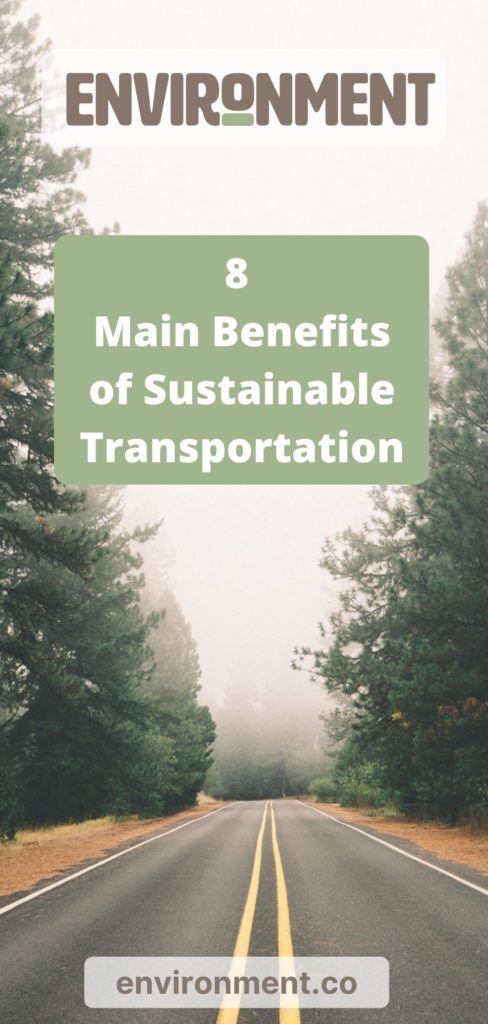
8 Main Benefits of Sustainable Transportation
We are reader-supported. When you buy through links on our site, we may earn affiliate commission.
About 6,800 organizations provide public transportation within the U.S. Compared to driving cars, this mode of transport is incredibly sustainable, even more so if it utilizes electric or hybrid energy.
However, only 5% of working men and women utilize public transit systems. Rather, they use their own vehicles to commute to and from their jobs. This only exacerbates problems like greenhouse gas emissions, global warming and smog. Obviously, there must be a shift in mentality toward sustainable transportation before people begin transitioning into using it more frequently.
Understanding the benefits of sustainable transportation — of which there are many — may encourage workers to utilize it. Whether it be your health, the Earth, the community or your pocketbook, sustainable transit is better for them all. They will become more mainstream as the number of riders increases, allowing systems to expand and create an even greater impact.
1. Creates Jobs
Investing in sustainable transportation often translates to the creation of more jobs. Building infrastructure to support public transit, developing greener alternatives to diesel-fueled vehicles and manning these new transport methods all provide job openings to those who desperately need them.
In fact, placing public transport in high-unemployment communities creates 2.5 more jobs than putting them in low-unemployment communities. Developing sustainable transportation is also highly inclusive, as it calls on the talents of designers, innovators, construction professionals, maintenance workers and many others with a wide variety of skills.
2. Provides Safer Transportation
Sustainable public transportation is also 10 times safer per mile than driving a personal vehicle into the city. Moreover, commuters can reduce their chance of being involved in a crash by more than 90% by hopping aboard public transit. However, if it isn’t an option or is not within walking distance, people have no choice but to drive to work, school and other locations within metropolitan areas.
3. Emits Less Pollution
Transportation accounts for nearly 30% of greenhouse gas emissions in the United States. However, about 82% of those emissions come from personal vehicles. Buses and trains only account for a mere 6%, making these modes of transportation much greener than cars and trucks.
Moreover, many public transit systems are going electric, further reducing emissions. Clean diesel may also be a viable alternative to transporters who can’t switch to electric or low-emission vehicles.
4. Promotes Health
Because sustainable transit reduces emissions and air pollution, it also promotes community health. Currently, almost half of all Americans live in areas with air pollution levels that exceed federal regulation limits. If more commuters took public transit, pollution levels would drop dramatically, helping people breathe easier and live longer.
Other sustainable modes of transportation, like biking and walking, also provide physical exercise to commuters while emitting zero emissions. This betters their health, as well as that of the entire community.
5. Decreases Congestion
Naturally, when people choose sustainable transportation over driving themselves, congestion also decreases. This shortens commutes and reduces roadway stress for those who continue to use highways and city streets. Moreover, travel time is often shorter for those who take public transit. Since trains and some trolleybuses don’t have to stop and start at lights and intersections, commuters can get from point A to point B even quicker.
6. Saves Energy
Congestion relief can also contribute to overall energy savings. Vehicles stuck in traffic waste fuel and create more emissions through constant starting and stopping. Even though a single transit vehicle requires more energy than a personal one, the amount of energy use per passenger is less. Thus, public transit — as well as walking and biking — encourages energy conservation.
7. Conserves Land
Sustainable transportation also encourages compact development, which reduces travel time between destinations. While there may be more streets and paved areas in metropolitan areas, there is less in the suburbs and the land surrounding cities. This leaves more room for parks, farmland and other green space. Fewer roadways in country areas results in less runoff, thereby protecting the land and the biodiversity it harbors.
8. Saves Money
Investing in sustainable transit may be expensive in the beginning stages of development, especially when doing so requires building roads, purchasing buses and creating the proper infrastructure for transportation systems. However, the investment is often worth the reward of economic and personal savings. Moreover, maintaining public transportation systems is cheaper than maintaining roads. In 2017, the U.S. spent $177 billion on highways but only $70 billion on mass transit and $5 billion on rail.
Benefits of Sustainable Transportation are the Future
The benefits of using sustainable transportation are many, and we would be wise to embrace this mode of public transit. From lowering pollution rates to helping people save money to easing congestion on busy roads, eco-friendly commuting is the wave of the future. It’s time to hop on board.

Share on
Like what you read? Join other Environment.co readers!
Get the latest updates on our planet by subscribing to the Environment.co newsletter!
About the author

Jane Marsh
Starting from an early age, Jane Marsh loved all animals and became a budding environmentalist. Now, Jane works as the Editor-in-Chief of Environment.co where she covers topics related to climate policy, renewable energy, the food industry, and more.





